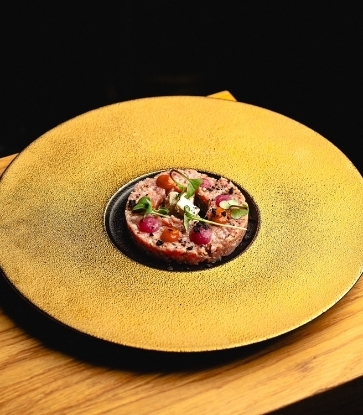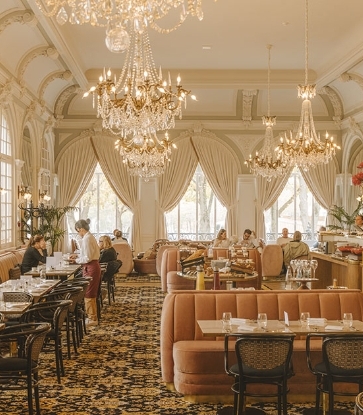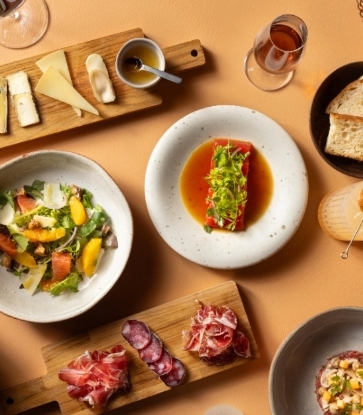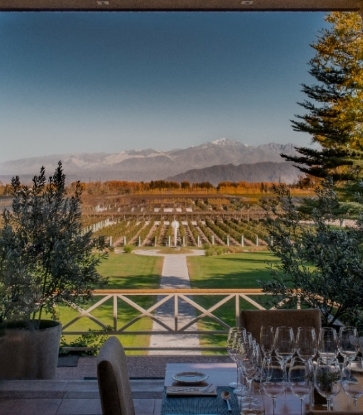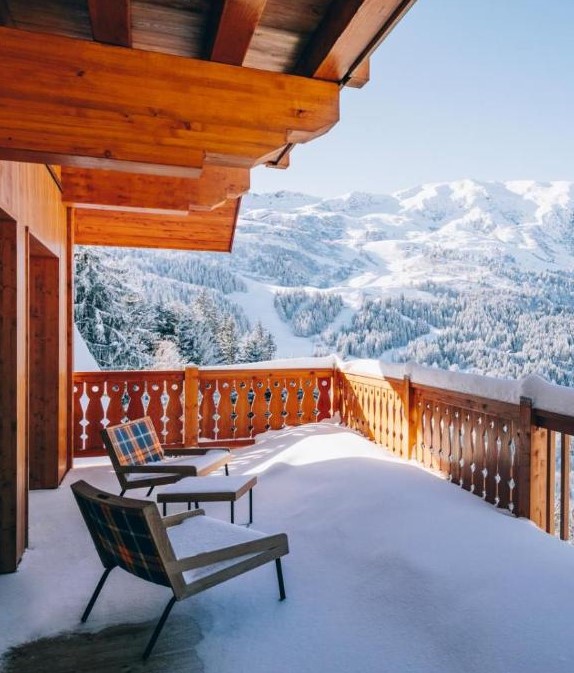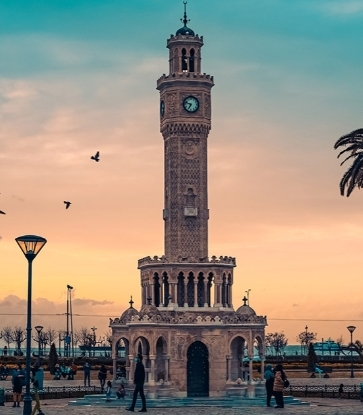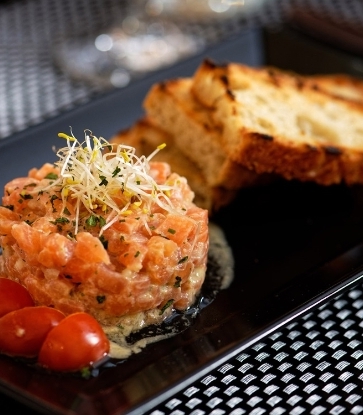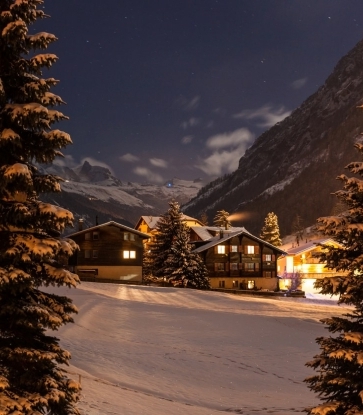Argentina is renowned around the world as the country for meat par excellence and there are plenty of reasons why this is the case. Not only does it have the highest consumption of beef on the planet, but its population of 45 million inhabitants shares its landscapes with 50 million cattle, a statistic that has created an indelible link between its citizens and its tradition of beef. It doesn’t matter whether you live in the northern Andes or the pampas of Patagonia, along the Atlantic coast or amid the country’s jungle landscapes – for Argentinians meat will always be a key part of their history, their diet and their culture. “We are so indelibly linked with meat as a nation that the country’s financial standing is measured by how much meat we eat in a particular year. It is something that defines us as a country. Meat, and ‘asado’ (grilled meat) in particular, is synonymous with meeting friends and provides the strong basis for social interactions”, explains Germán Sitz, chef and co-owner with Pedro Peña at La Carniceria, one of the recommended restaurants in the MICHELIN Guide for the city of Buenos Aires. Germán knows what he is talking about: he hails from a family of cattle producers and it is from their pastures that he sources the meat that he uses and cooks in his restaurant every day.

A Little History
Before the 16th century, beef cattle didn’t exist in America; in fact, Chistopher Columbus was the first to bring cattle to the continent during his second conquest in the year 1493. After that, cows, bulls, pigs and chickens were transported in greater numbers in order to accustom them to the different weather and ecological conditions of a new land vastly different to the one they set sail from. It was not until several decades later, in the early 16th century, that the first cattle reached Argentina – brought overland from Peru, as well as from Brazil, Paraguay and Chile. And it was here, thanks to the perfect conditions offered by the pasturelands of the Pampas, that these animals found a paradise in which they could breed: from just a few thousand to, according to statistics recorded in 1850, 20 million head of cattle. From 1836 onwards, the first British breeds started to be imported – in particular, Shorthorn, Hereford and Aberdeen Angus – as part of a quest to improve genetics. Due to their high quality and yield, they quickly displaced the Crillo breed in fields across the length and breadth of the country, transforming Argentinian meat into a global icon. Today, 55% of cattle reared for meat are Aberdeen Angus, with the remainder split between Hereford, crosses such as Bradford and Brangus, as well as Criolla. And while cattle are bred in every province of the country, from Ushuaia in the far south to Jujuy in the north, more than half of Argentina’s livestock is concentrated in its most fertile region, between Buenos Aires, Santa Fe, Entre Ríos and Corrientes.
“Today, we are seeing an important global movement that talks about regenerative livestock, where the aim is to not only minimise the impact of the industry on the environment but to use the same livestock – through the use of pasture – to regenerate the environment and to improve it. But for us, this is no more than a return to our traditions: for the past three generations my family has been doing exactly that, maintaining a small plot of land, and allowing our cattle to roam and graze on whatever grows in this area”, Germán adds. “While feedlots in many countries removed cattle from the field, this didn’t work in Argentina: given the natural conditions we have here, our climate and the expanse of our land, feeding cattle cereals instead of grass would be uneconomical”, he continues.
It is this pasture-fed meat, from animals which, until shortly before they are slaughtered, are fed for a few months with cereals to increase their weight by several kilos in order to enhance their intra-muscular fat, which has created the renown of Argentinian meat. These are cattle that are not kept enclosed in cowsheds but are allowed to roam at will in the countryside like any animal visible as you drive around Argentina’s roads. “I particularly like the Hereford and Angus breeds and we specialise in these as a family; at La Carniceria, we source our meat from animals that are almost 500 kilos in weight and aged around two years and eight months. I also enjoy working with other breeds, for example the Holando Argentino, a breed reared to produce milk, and which are slaughtered at around seven or eight years. We are alone in offering their meat as something special (it’s not something you’ll find on our regular menu) as production is not large scale. Their meat is amazing but it requires very careful and expensive processing”.
A National Passion
“The close identity that Buenos Aires has with meat can equally be found in Mendoza. In fact, I would say that it is also countrywide as you’ll also find it in Córdoba, in Patagonia, and in the north”, confirms Matías Gutiérrez, chef at Abrasado, the Michelin-recognised restaurant at the Los Toneles bodega in Mendoza. “We work with Black Aberdeen Angus cattle that the family that owns the wine estate rears on their own land in Río Cuarto, in the south of Córdoba province. For this reason, we like to say that our concept is that of “from field to fork” because we have detailed knowledge of the traceability of meat that comes from pasture-fed animals who are then fed grain before slaughter to gain intramuscular fat”.

While the traditional Argentinian parrilla uses wood or charcoal to grill meat and offal, at Abrasado they go down a different route: “We dry age our meats for 45 days in special chambers where the temperature, humidity and air flow are carefully controlled; this enables cuts of meat to be dried and their flavours to be more concentrated, while also ensuring a tender texture. Then, in order to show off this dedicated work to the full, we choose to cook the meat with volcanic stones that we heat over flames until they reach the required temperature. If we were to use wood or charcoal, we would alter the flavour of the meat”, he continues. In this Mendoza restaurant located in the Guaymallén area of the city, just a few minutes from the centre of this provincial capital, it is possible to eat cuts of meat such as ribeye and skirt that have been simply aged, as well as others where the maturing processed is enhanced, such as the T-bone injected with black garlic, the ‘Bistecca’ (bone-in ribeye) with whisky, and the Tenderloin macerated with kombu seaweed, among other dishes.

Whether it’s prepared on the grill, in pots or in the oven, as a filling for pastas or empanadas, served hot or cold, raw or cooked, quickly cooked to retain its juices, or slowly braised to convert its collagen to gelatin, chefs have myriad ways of preparing and serving meat. “Meat is very versatile because, in essence, when we talk about beef, we are talking about a group of muscles and organs that is very diverse, with each one possessing its own structure and flavour”, explains Facundo Kelemen, the chef at Mengano, a Bib Gourmand restaurant in the MICHELIN Guide. At Mengano, this chef has revived traditional recipes from Buenos Aires’ typical ‘bodegones’ which he combines with his own creative touch. “I enjoy using meat from different breeds, mainly British, although I’m also a fan of Argentinian wagyu, the genetic code of which was originally from Japan, and which produces a highly intense and distinct intramuscular marbling”.

Every country has its own way of butchering an animal, with specialist butchers handling the muscles, connective tissue and bones in accordance with their own method of doing things. In Argentina, the most renowned cuts are called “parrilleros” and are perfect for cooking over the heat of the parrilla’s embers. These cuts are from the central section of the animal: the ribeye, sirloin, rib, flank, loin, and rib cap. The hind quarters of a cow, popularly known in Spanish as the ‘mocho’, provide the best-selling cuts and those used in the country’s classic dishes, including the famous milanesa: these cuts include topside, sirloin tip, beef round, bottom round, rump steak, oyster steak, tortuga and beef shank. The front quarter provides cuts such as chuck, roast beef, neck and flank – cuts that in general require longer, more patient cooking to ensure maximum tenderness.
“For our flank steak pizza, first we cook the flank for several hours in milk and typical Argentinian spices and condiments such as garlic, paprika and chilli powder. We then add smoked stracciatella, grilled onions and a portion of ‘fainá’ on top. We cook our roast wagyu tapa sous-vide for 21 hours at 80ºC; we then remove the fat, cut it into thick slices, cover with breadcrumbs and fry it. Lastly, we then make a milanesa-style sandwich which slightly resembles a Japanese katsu. However, cooking options are limitless depending on what we are looking for and what meat we use. For example, on our menu we have an aged sirloin steak that we cook very quickly in a mushroom butter that is incredibly juicy. We also offer a carpaccio of raw meat served with heritage tomatoes”, Facundo adds.

At La Carniceria, the ribs are smoked for 20 hours at low temperature, using wood from fruit trees, especially cherry, to obtain a smoky flavour that is much milder than is customary in the United States. They serve it with a cauliflower purée, crunchy fried cauliflower and sautéed mushrooms. On the other hand, the ribeye is thickly cut, then cooked quickly over extremely hot quebracho charcoal which induces a Maillard reaction before the heat intensity is reduced to cook the meat exactly as each guest has requested.

At Abrasado, other dishes include Angus loin tartare topped with a crunchy macaroon and a raw egg yolk, bone-in ribeye aged with whisky, and the 330g skirt steak which is cooked quickly and accompanied by a strawberry and sherry vinegar creole salsa.
When it comes to eating meat in the ‘land of meat’, whether you’re dining in a steakhouse, ‘bodegón’, cantina, or an inexpensive or high-end restaurant, the options are limitless.

Hero image: Frigorífico Millán cattle – the company also owns the Abrasado restaurant © Abrasado
This article has been written with the support of our Destination Partner in the "MICHELIN Guide Buenos Aires & Mendoza 2024".








